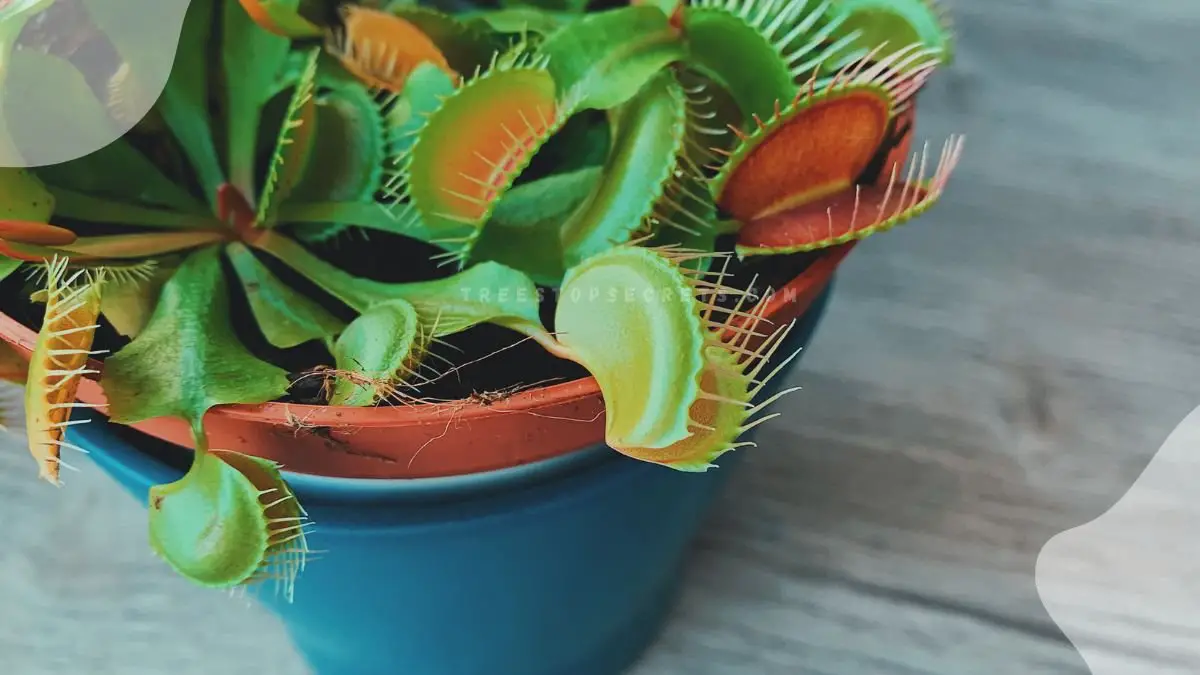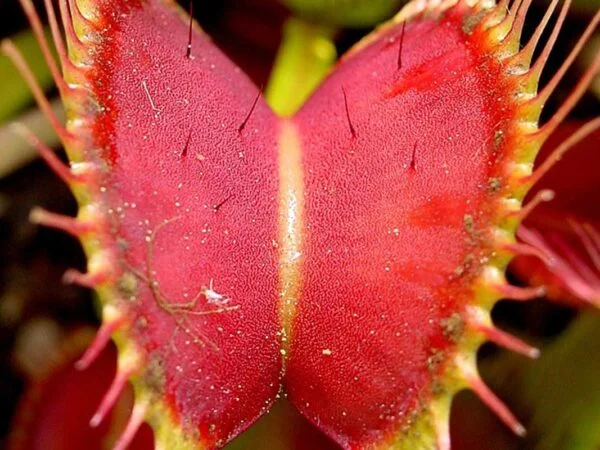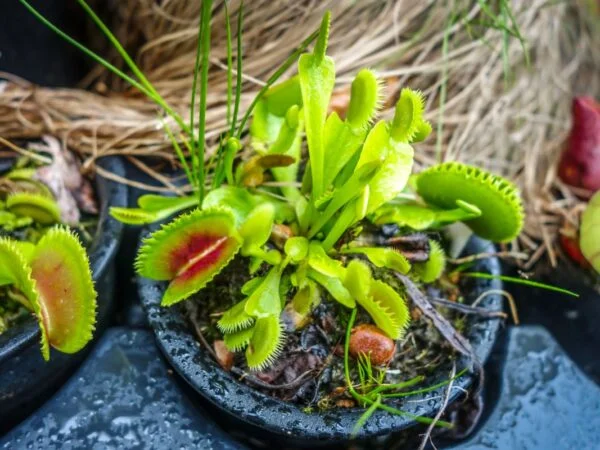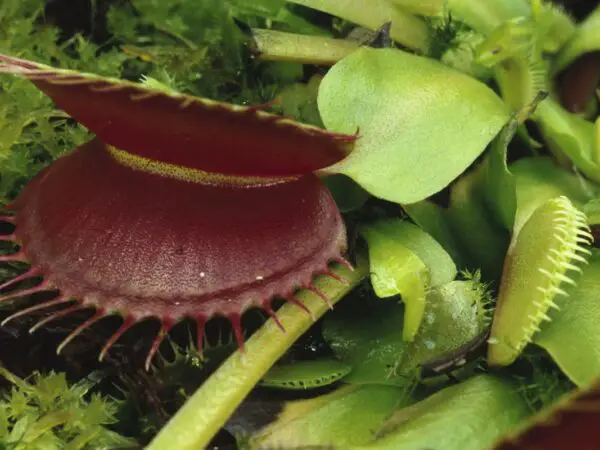Did you know that the Venus flytrap flower can snap shut in just 0.1 seconds? This remarkable plant, native to the wetlands of North and South Carolina, is a fascinating carnivorous species that captivates many with its unique trapping mechanism. The Venus flytrap, a carnivorous plant that traps, lures, captures, and digests insects, sets it apart from typical flora, making it a subject of intrigue for botanists and nature enthusiasts alike.
Key Takeaways
- Encourage Flowering: Allowing your Venus flytrap to flower can be a rewarding experience, showcasing its natural beauty and resilience.
- Care Tips: When caring for flowering Venus flytraps, ensure they receive adequate sunlight, water, and proper soil conditions to support their blooming phase.
- Pruning Guidance: Decide whether to trim the flower stalks based on your plant's health and energy levels, as cutting them can redirect resources for better growth.
- Propagation Benefits: Propagating Venus flytraps through flower stalk cuttings can be a successful method to expand your plant collection or share with fellow enthusiasts.
- Continuous Learning: Stay curious and keep exploring the world of Venus flytraps to deepen your understanding of these fascinating plants and improve your care techniques.
Understanding Venus Flytrap Flowering
Why They Flower
Venus flytraps flower in response to seasonal changes and the need for reproduction. The triggers for flowering include day length and temperature. Flowering is crucial for the plant's life cycle as it allows for pollination and seed production. This process ensures the survival and genetic diversity of Venus flytraps.
Flowering also plays a significant role in maintaining the health of Venus flytraps. It indicates that the plant is mature and healthy enough to reproduce. Flowering helps in attracting pollinators, such as bees and butterflies, which aid in the pollination process.
Winter Blooms
During winter, Venus flytraps may bloom due to warmer temperatures or indoor cultivation conditions. However, winter blooms can pose challenges for these plants. The reduced daylight hours and lower light intensity affect the blooming process, leading to smaller flowers or delayed blooming.
Winter blooming also impacts Venus flytrap care. Since these plants require a period of dormancy during colder months, winter blooms can disrupt this cycle. It may result in weaker growth or affect the plant's ability to store nutrients for the next growing season.
Reasons to Let Your Venus Flytrap Flower
Benefits of Flowering
Allowing your Venus flytrap to flower enhances its overall health and vitality. Witnessing the unique blooms can be a rewarding experience for plant enthusiasts.
Flowering contributes to the reproductive cycle of Venus flytraps, promoting genetic diversity within the species. This natural process, which involves the trap, is crucial for the long-term survival of these carnivorous plants.
By letting your Venus flytrap flower, you are actively supporting its growth and development. The flowering stage is a vital part of the plant's life cycle, ensuring its continued well-being.
- Enhances overall health
- Promotes genetic diversity
- Supports growth and development
Understanding the benefits of allowing your Venus flytrap to flower can lead to a deeper appreciation for these fascinating plants. Embracing this natural process can enrich your gardening experience and foster a deeper connection with nature.
Caring for Flowering Venus Flytraps
Maintenance Tips
To maintain healthy flowering Venus flytraps, ensure they receive ample sunlight and distilled water. Avoid using tap water.
- Use a well-draining carnivorous plant soil mix to prevent root rot.
- Remove dead traps regularly to promote new growth and flowering.
- Avoid feeding the plant during the flowering period to conserve energy for blooming.
Effective strategies for prolonging the lifespan of Venus flytrap flowers include providing adequate humidity levels. Mist the plant occasionally.
Key maintenance tips for successful Venus flytrap flowering involve keeping the soil moist but not waterlogged. Monitor the moisture level regularly.
Winter Care
During winter, implement specialized care techniques for Venus flytraps by ensuring they receive sufficient sunlight despite the shorter days.
Discover how to protect Venus flytraps from potential winter-related issues such as frost damage by moving them indoors or covering them with a protective layer.
Adjust care routines to meet Venus flytrap needs in winter by reducing watering frequency and allowing the plant to experience dormancy.
To Cut or Not: Managing Flower Stalks
Pros and Cons
Venus flytrap flowering can be a fascinating phenomenon for plant enthusiasts. Encouraging the growth of these unique flowers adds to the aesthetic appeal of your plant collection. However, it's essential to weigh the benefits against the drawbacks.
- Pros:
- Witnessing the blooming of Venus flytrap flowers is a rewarding experience that showcases the plant's vitality.
- The delicate flowers can attract beneficial insects like bees, aiding in pollination and promoting biodiversity.
- Allowing your Venus flytrap to flower can potentially lead to seed production, enabling you to propagate new plants.
- Cons:
- Flowering requires a significant amount of energy from the plant, which may weaken it over time.
- The production of flowers can divert resources away from trap maintenance, potentially impacting the plant's ability to catch prey.
- After flowering, Venus flytraps enter a dormant phase, during which they may appear less vibrant and active.
When deciding whether to cut the flower stalks of your Venus flytrap, consider these aspects carefully. While the beauty of the flowers is undeniable, it's crucial to prioritize the overall health and longevity of your plant. By assessing both the advantages and disadvantages, you can make an informed decision that aligns with your gardening goals.
Propagating Venus Flytraps
From Flowers
Propagating Venus flytraps from cut flower stalks is a fascinating process that allows you to create new plants. By carefully cutting the flower stem, you can use it to produce new Venus flytrap plants. This method involves selecting a healthy flower stalk and making precise cuts to encourage root growth.
To create new Venus flytrap plants using flower stem cuttings, start by selecting a mature flower stalk with healthy seeds. Carefully cut the stalk just below the seed pods, ensuring to leave enough length for planting. Plant the cut end in a suitable growing medium, keeping it moist and warm to promote root development.
Understanding the steps involved in successfully propagating Venus flytraps from flowers is essential for plant enthusiasts. By following proper cutting techniques and providing optimal growing conditions, you can multiply your Venus flytrap collection effectively. Patience and attention to detail are crucial during this propagation process.
Without Flowering
For those looking to propagate Venus flytraps without relying on flowering, there are alternative methods available. Dividing individual Venus flytraps is a common technique used to multiply plants without waiting for them to flower. This method involves separating healthy plant clusters into smaller sections for replanting.
Exploring effective strategies for multiplying Venus flytraps through non-flowering means can be rewarding. By carefully dividing mature plants into smaller sections, you can create new individual Venus flytraps. This process requires precision to ensure each divided section has sufficient roots for successful growth.
Understanding how to propagate Venus flytraps successfully even without flowering provides plant enthusiasts with flexibility in expanding their collections. By mastering the art of dividing and replanting mature plants, you can create thriving Venus flytrap populations indoors or outdoors. Consistent care and monitoring are essential for the healthy development of propagated plants.
Learning More About Venus Flytraps
Finding Resources
Finding reliable sources for venus flytraps care is crucial for their well-being. Look for websites dedicated to carnivorous plants, such as the International Carnivorous Plant Society. These platforms provide detailed information on life history venus flytraps, including tips on watering, soil, and sunlight requirements.
Explore specialized forums and online communities where experienced growers share their knowledge on venus fly trap cultivation. Websites like FlytrapCare offer comprehensive guides on plant carnivory and specific care instructions tailored to different stages of a flytrap's growth.
Seek out local botanical gardens or nurseries specializing in carnivorous mechanisms. These establishments often host workshops and events focusing on venus flytraps, providing hands-on experience and practical advice for maintaining these unique plants in your home environment.
- Reliable sources:
- International Carnivorous Plant Society
- FlytrapCare website
- Expert advice:
- Specialized forums
- Local botanical gardens
Final Remarks
After learning about Venus flytrap flowering, reasons to let your plant bloom, caring tips, and managing flower stalks, you are now equipped to propagate and explore more about these fascinating plants. By understanding their unique needs and life cycle, you can ensure the health and longevity of your Venus flytrap. Remember, proper care and attention will reward you with beautiful blooms and a thriving plant.
Take the time to implement the tips shared in this article to see your Venus flytrap flourish. Share your newfound knowledge with other plant enthusiasts and continue to expand your understanding of these captivating carnivorous plants. Keep nurturing your Venus flytrap with care and watch it thrive in your home garden.
Frequently Asked Questions
Can Venus Flytrap flowers be grown indoors?
Yes, Venus Flytrap flowers can be grown indoors if provided with adequate sunlight and a humid environment. Ensure proper care to mimic their natural habitat.
How often do Venus Flytraps flower?
Venus Flytraps typically flower once a year during the spring or early summer months. The flowering period usually lasts for a few weeks.
Do Venus Flytrap flowers attract insects?
Yes, Venus Flytrap flowers produce nectar to attract insects for pollination. However, the traps of the plant are responsible for catching prey for nutrition, not the flowers.
Should I remove the flower stalks from my Venus Flytrap?
It is recommended to remove the flower stalks from Venus Flytraps to conserve energy for trap growth and health. Cutting off the flower stalks helps redirect nutrients back to the plant.
How can I propagate Venus Flytraps through flowering?
You can propagate Venus Flytraps by allowing the flowers to bloom and produce seeds. Collect the seeds and sow them in a suitable growing medium to start new plants.
Image Source: Paid image from CANVA





